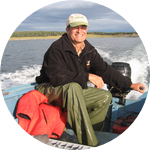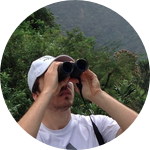About This Project
The "Bird Bazaars of the Arctic" are immense seabird colonies where millions of seabirds nest closely together. Because Arctic seabirds winter on the high seas, the only place to survey them is on Arctic cliffs. Counting birds nesting far up on towering cliffs is difficult and dangerous. We are asking for funds to develop a technique for counting birds with drones, allowing scientists to accurately and safely census Arctic bird populations, which is essential to effectively conserve them.
Ask the Scientists
Join The DiscussionWhat is the context of this research?
Counting cliff-nesting seabirds can be difficult from below (by boat, on the ice or on a beach), and necessarily misses many of the birds that are hidden behind obstacles or in cracks. Furthermore, working in remote ice-choked waters can be dangerous and several biologists have died studying Arctic seabirds. Drones have proven to be useful for studying ground-nesting seabirds, but have yet to be used to census cliff-nesting birds where the terrain is typically more complex. We propose to develop a method for counting seabirds using drones.
What is the significance of this project?
There are tens of millions of seabirds in the Arctic. Although they nest on cliffs, and so can be relatively easily counted, we have very little idea if many of the populations are changing. For instance, in northern Canada, some of the populations have not been counted since the 1970s. This is a big problem because the Arctic is rapidly changing. Ice is present for less time each winter and consequently there are more ships, more industry, more opportunities for oil spills, and more disruption to the birds. We need to develop an accurate method for easily censusing these birds, which is why we are testing out the possibility of using a drone to census them.
What are the goals of the project?
We have one simple goal: to develop a method for automatically censusing cliff-nesting seabirds in the Arctic. To do so, we will test different kinds of drones at different distances from the colony to see what drone and distance allows us to accurately count seabirds without causing them to desert their eggs. Previously, we showed that a small octocopter does not cause breeding birds to desert their eggs. However, the small vehicle can only carry a small camera, and it is very time-consuming (weeks for a large colony) to census the entire colony. We now wish to test a larger vehicle that can be flown farther away from the colony with a much larger and better camera. We will fly the larger fixed-wing drone past the colony while observing the effect of the vehicle on breeding birds.
Budget
It is expensive to ship items to the Arctic, and we need to get the drone up there to use it! Also, we need help from an assistant to fly the drone while one of us watches the reaction of the birds. As all other costs are covered, we simply need to pay their flight to Iqaluit.
Endorsed by
Meet the Team
David Michael Bird
I have spent forty years of my life studying birds of prey at McGill University in Montreal, amassing nearly 200 peer-reviewed scientific publications and supervising fifty graduate students. I have also taught ornithology and wildlife conservation to several hundred undergraduate students. Many of my students have gone on to secure influential jobs in wildlife biology in North America and beyond. I also believe strongly in promoting science to the public and have given countless hours to writing magazine and newspaper columns and appearing on radio and television. Ten years ago, I came across the use of drones by military personnel and immediately saw their potential for studying and managing wildlife. I supervised four graduate theses on applications of drones for this purpose and, four years ago, I founded the Journal of Unmanned Vehicle Systems.
Émile Brisson-Curadeau
At 8 years old, I wanted to find a new species of bird never seen before in Canada. Looking back, this was a pretty naive objective, but my passion for ornithology has not weakened at all since then. Now, my desire to study the fragile but oh-so impressive Arctic ecosystem pushed me to do my MSc on nordic seabirds at McGill University. Who knows? There may be a bird that has yet to be seen in the vast territory of northern Canada? Or maybe not... better keep working on my MSc.
Lab Notes
Nothing posted yet.
Project Backers
- 6Backers
- 11%Funded
- $344Total Donations
- $57.33Average Donation


